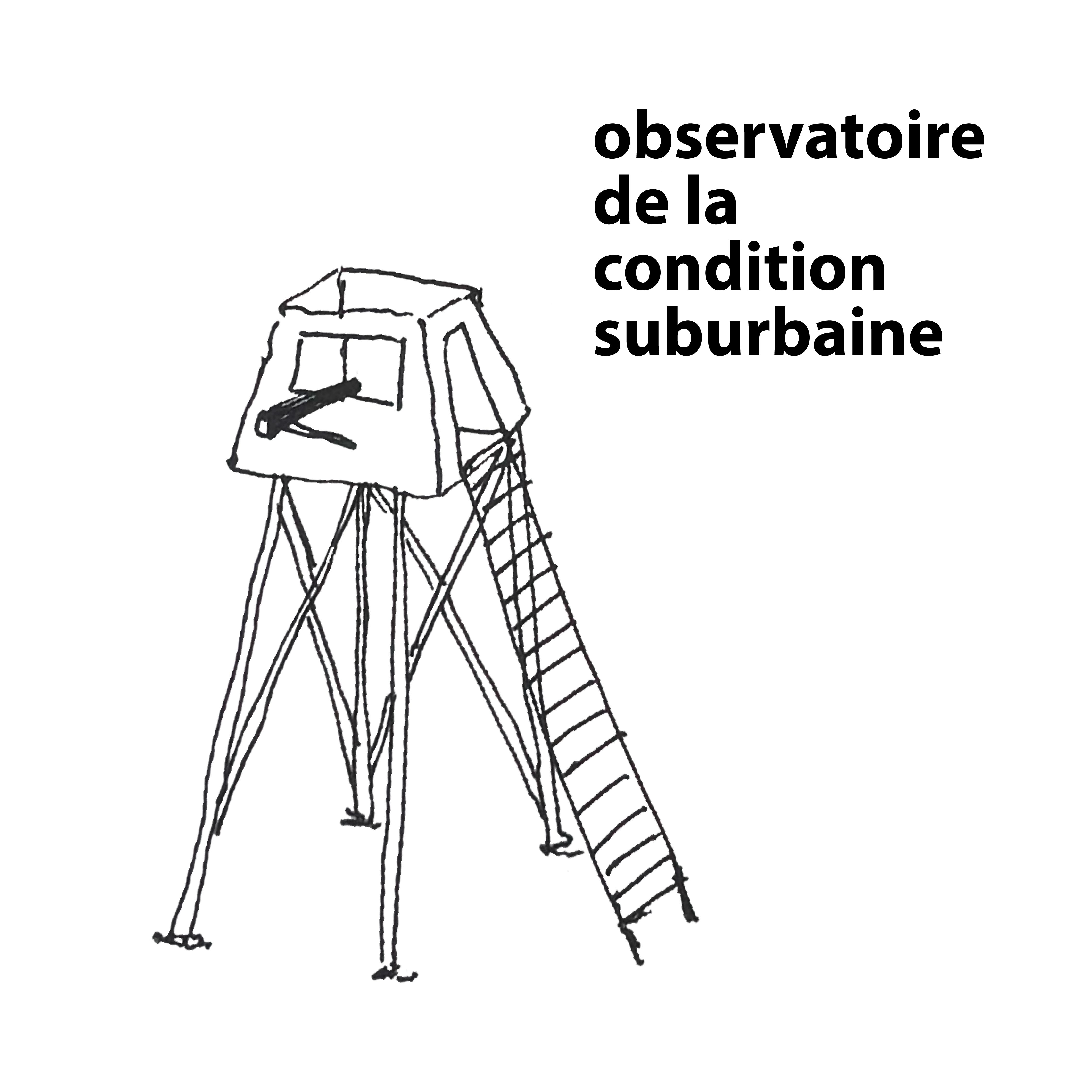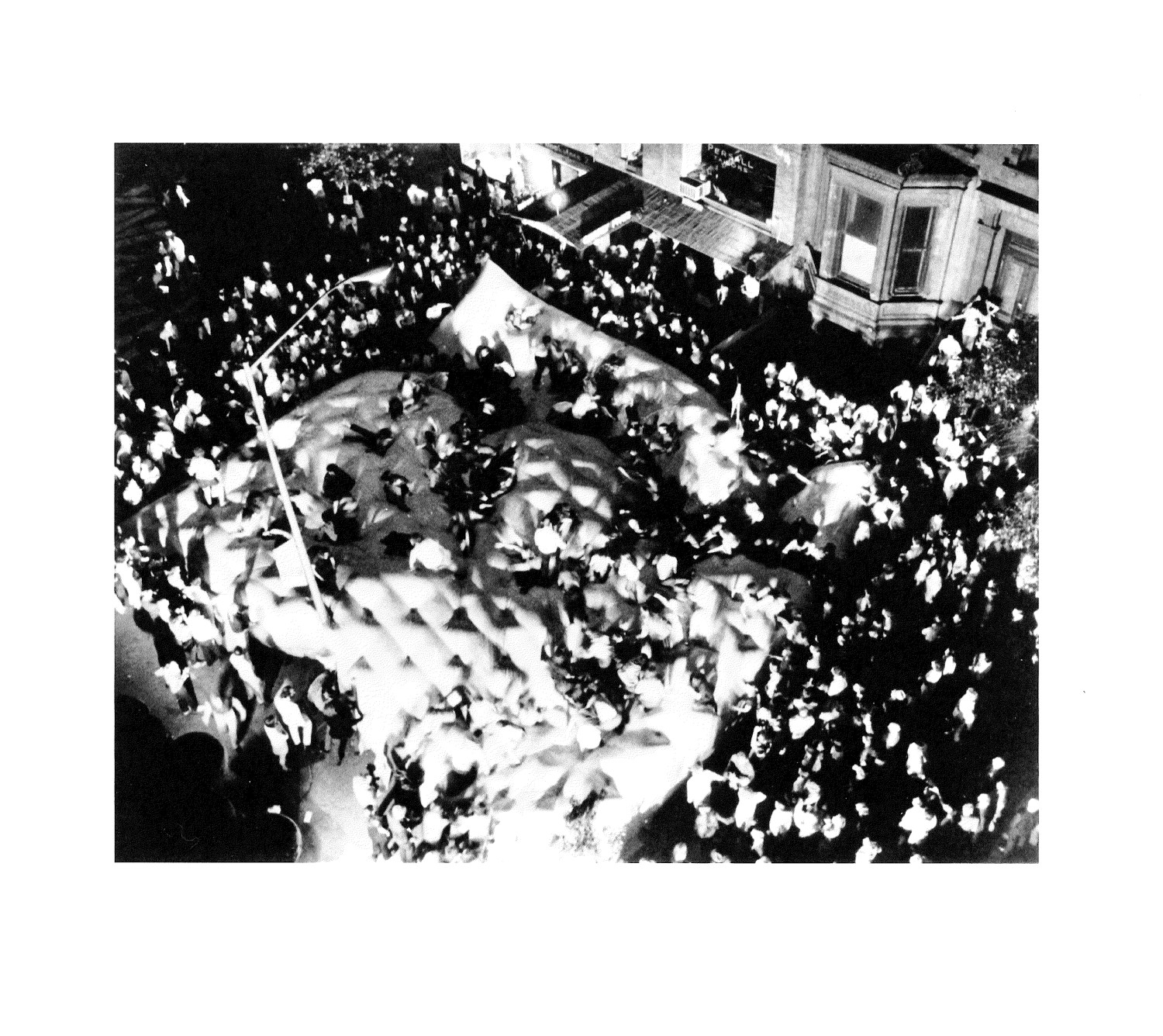The Materialities of the Ephemeral City
Call for papers
International Study Day
au 05.12.2025
Call for abstracts
What builds a city is more than materials meant to cross time. Since its origins, the permanent city has always been overlaid with ephemeral layers that interrupt and reshape the everyday use of streets, squares and buildings. Festivals, religious processions, military parades and spontaneous gatherings, political protests and artistic interventions reveal the city as a site of continual material transformation, where temporary, perishable, lightweight or unconventional substances turn the city into a fantastic stage, radiating the potential for a détourned public realm.
The ephemeral city is first and foremost a material city that celebrates or critiques urban space. Its scenography emerges from wood, textiles, paper, metal, plastic and inflatable structures, combined with plants, sand, dust, edibles, screens, bodies, and phenomena such as light, sound, optical effects. Together, they build architectures destined to be dismantled, stored, burned, vanished or consumed, resisting the logic of firmitas and subverting utilitas. Yet, because of their transience, they carry the very intention of opposing and diverting the permanent city. They amplify the urban venustas by generating immersive experiences that engage all senses, extending architecture beyond its canonical limits.
The ephemeral city is a collective construction site, where citizens, guilds and crafts collaborate in handling, building, moving and disassembling matter. Its material assemblages are never neutral: they may celebrate authority or resist it, perform rituals of belonging or contestation, and generate new forms of order or disorder. Ephemeral constructions and their tactile, sensory, and often edible substances become instruments of both social control and emancipation, offering fleeting architectures where complex political dimensions emerge.
Between machine and flesh, sacred and sensual, institutional and popular, authoritarian and grotesque, the materials of the ephemeral city form experiential bridges across traditionally distinct categories. They lay the groundwork for an ‘in-betweenness’ of objects, human beings and their genders, classes and hierarchies. Despite its ‘weak’ and ‘nonmatrixed’ essence, the ephemeral city offers an alternative to dominant urban rhythms, and to a contemporary urban fabric now plunged into crisis by political, climate and migration emergencies.
We invite contributions, across histories and geographies, that investigate the materiality of the ephemeral city – its role as a ‘laboratory’ for design strategies as well as for technical, artistic, political and architectural experimentations.
Possible thematic axes include, but are not limited to:
Substances: perishable and non-perishable materials in the making of ephemeral urban spaces. Material agency: how ‘weak’ materials (lightweight, disposable, dissolvable, edible, fragile) acquire political and symbolic power in urban contexts. Sensory phenomena: the role of textures, smells, sounds, tastes, lights and optical effects in shaping collective experiences of the ephemeral city. Rituals of making and unmaking: collective acts of assembling, dismantling, burning, consuming, and dispersing material structures. Materiality and traces: what remains once the ephemeral city disappears and what sources bear witness to its existence. Ecologies of the ephemeral: the environmental and climatic implications of ephemeral material practices—waste, recycling, and decay. Bodies as materials: the human body (and its adornments, masks, costumes) as both building matter and site of ephemeral urban transformation.
| Expected contributions and schedule |
| The conference will be held on June 19, 2026, at the Institut d’Études Avancées (IEA), Paris, France → Responses to the call for proposals : responses are due by December 5, 2025 in the form of 500 words proposal and a short bio (100 words) Proposals should be sent to : ephemeral.city.2026@gmail.com → Selected authors will be notified in January 2026. Final papers of approximately 2,500 words will be due by May 31, 2026 → for any questions, please email the organizers at: Silvia Groaz (silvia.groaz@paris-est.archi.fr) Beatrice Lampariello (beatrice.lampariello@uclouvain.be) |
Scientific direction and Organising committee
Silvia Groaz
(OCS, Ensa Paris-Est)
Beatrice Lampariello
(LOCI-UCLouvain)
Scientific committee
Anna Rosellini
(OCS, Ensa Paris-Est)
Chiara Cavalieri
(LOCI-UCLouvain)
informations
deadline call for abstracts December 5, 2025
Illustration → Haus-Rucker-Co, Giant Billard, New York, 1970


